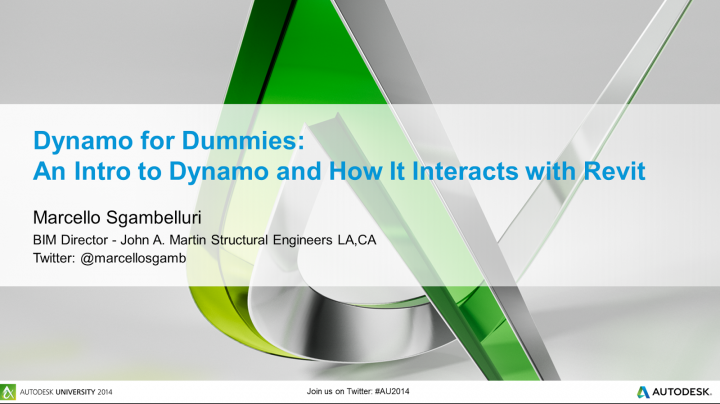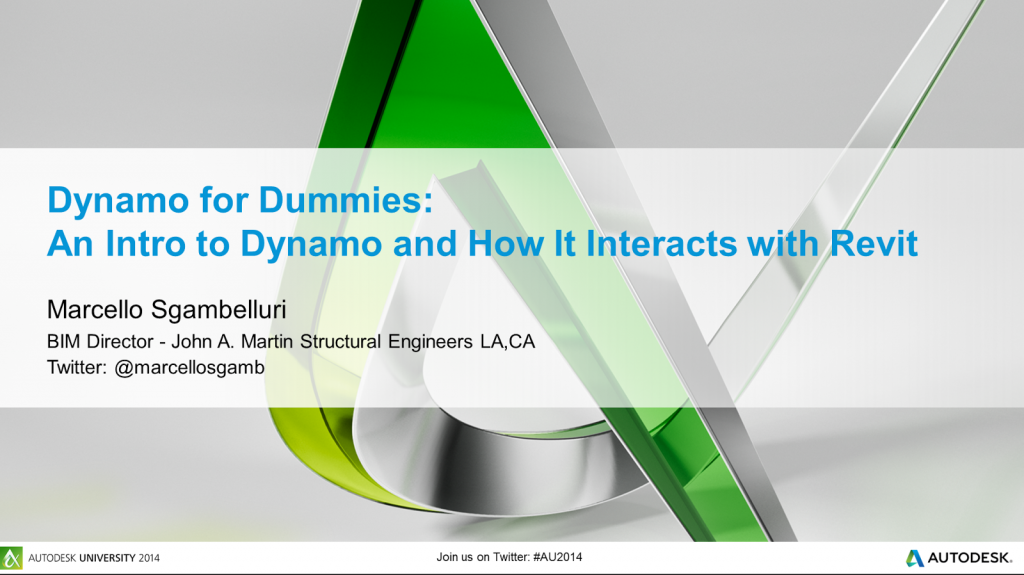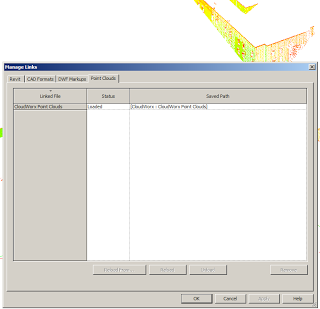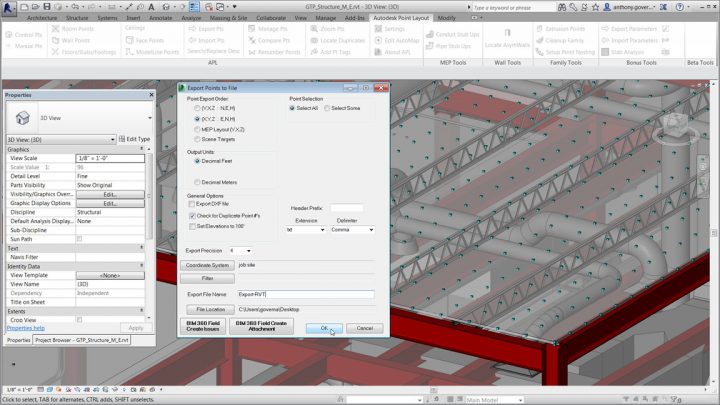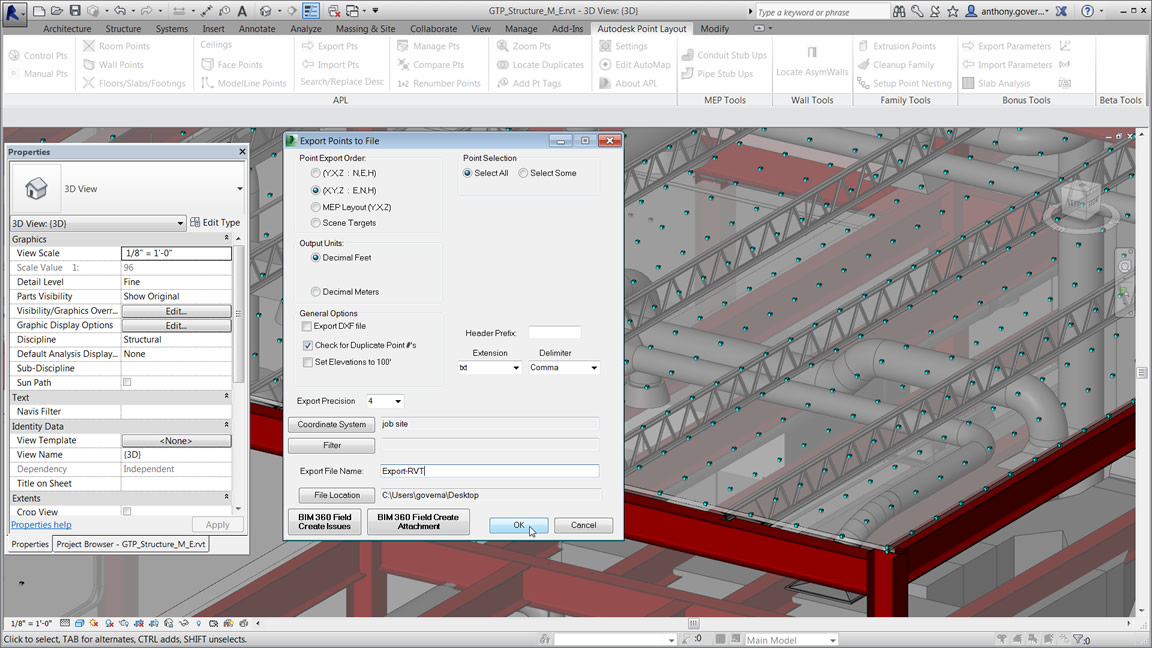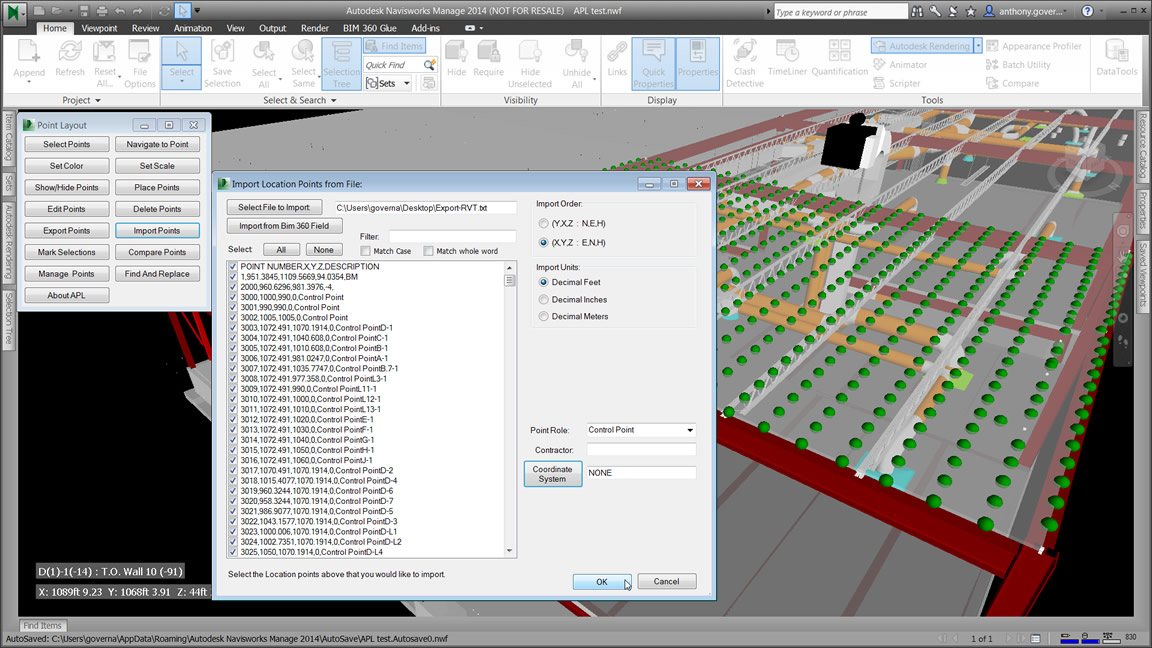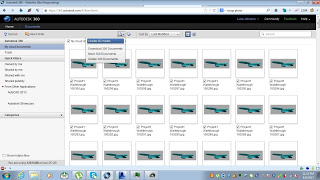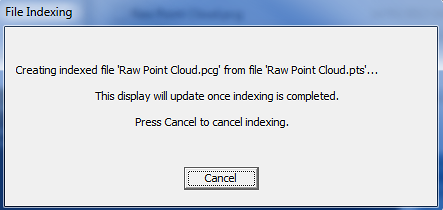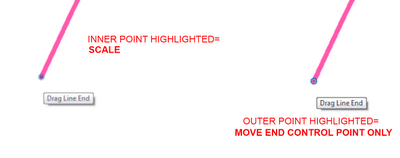Check out this free ‘practice’ screencast from Marcello, demonstrating how to extract points from Dynamo to Excel, among other things:
PRACTICAL DYNAMO EXERSIZE 4 EXTRACT POINTS TO EXCEL PRACTICE01 – Screencast | Autodesk Research (Embed)
Tag: points
Update:
I am enjoying using inverted background (black) when working with Revit and point clouds.
Also, you MUST use this add-in by Harry:
What Revit Wants: 3D Section Box crop add-in WITH automatic rotation – Boost Your BIM
I find it interesting that we can receive a point cloud (laser scan) of a project, which essentially describes the geometry and colour of the whole 3D space, and yet have to re-model everything in Revit elements to make it actually useful in a BIM / FM context.
It reminds me of the early days of document OCR – you could scan a document, but there was no easy way to infer the intelligence (text) of the document. Happily, OCR software improved, and I hope that geometry-from-point-cloud automation will also improve. Bring on the automatic, one-click “Make a Building from my Point Cloud” solution. In the meantime…
This post is about my experience working with point clouds and Revit 2013 on a recent project. I explored various different workflows and add-ins. I will add to this post over time to make it as useful as possible.
On the project in question, we received the following from the surveyor:
- Leica TruView data set
- RCS point cloud
- PTX point cloud
We did not receive:
- 3D geometry or Revit elements of any kind
- the surveyor was using a Cyclone 8.0 database (Leica)
- coordinates would be reduced to a consistent XY and Z datum (a Shared Coordinate system that we would use project wide. More detail on how to use point clouds and shared coordinates here).
- native Revit tools (in my case, using Revit 2013)
- Scan to BIM add-in by Imaginit / Rand (around $3000 for Standalone license)
- Leica Cloudworx for Revit (around $4000)
- Visualizing in Navisworks and modelling in Revit
- Revit 2012 and the Point Cloud Feature Extraction labs add-in (if you can find it anywhere)
- using Point Clouds in the Revit Family environment
Note 2: Note 1 is apparently a known issue. Workaround with 2014 and Recap is to bring the raw format scan into Recap, export it out as a .pcg file. Create a new project inside of recap and bring in that pcg file and save that off as a rcp… that error msg should no longer appear. (Thanks Cheyne Bird, IMAGINiT Australia)
Initial thoughts:
Scan to BIM seems to be the better tool for feature extraction and geometry creation, while Leica Cloudworx puts you in direct contact with the original point cloud data – not decimated by Revit.
General Tips:
- Revit will consume big amounts of memory when working with large point clouds
- Rule of thumb – indexing a 27 gb PTX
will result in a 7gb PCG and
will take about 7 hours for a mid-range PC. - Indexing 2 x 27 gb PTX using Recap version 1.0 and basically default settings
about 6 hours
8gb for new PCG - Working with 2 of these 7gb PCG files in Revit 2013 on XP64 with Scan to BIM will consume about 11gb of RAM easily. You may have to periodically close and re-open Revit, depending on your system specs.
- Working on the same point files using Cloudworx will consume about 2gb of RAM, depending on your view settings.
- If you are using Revit 2013 and you want to restrict Revit from highlighting (pre selecting) a point cloud, which can be annoying, just place it in a Design Option. It seems that Scan to BIM can still interact with a Point Cloud in a primary option of an option set.
- Did you know that Point Clouds when imported to Revit have a Phase Created and a Phase Demolished parameter? Revit respects this when it comes to Phase Filters and Graphic Overrides – keep this in mind if you can’t ‘find’ a point cloud in your project.
- You will be working in 3D a lot, and making lots of 3D views cropped to section boxes. I recommend that you set keyboard shortcuts for:
Orient to a Plane, and
Set Current View as HomeUsing these shortcuts, you can quickly reorient yourself and use the Viewcube properly. - The above workplane shortcuts work well after using the “Set Workplane” tools in the various add-ins. After triggering Orient to a Plan, just click OK. When Revit says -not associated-, it means ‘use the current workplane’. You should also set and use a keyboard shortcut for the Show Workplane button on the Home tab.
- When making a new 3D view, the quickest way is to select an existing Section Box and copy it using Revit copy (not Ctrl C) and drop it close to new desired location. It will appear in Project Browser with same name as previous 3D view, but with any digit on the end of the view advanced by 1. This is actually better than using Duplicate View, which adds this silly “Copy of” to the front of the new view name.
Note: This new Section Box will also remain selected, so you can adjust the crop before switching to the newly created view - You may wish to turn off “Snap to Remote Objects” in your Revit snaps, these can get in the way when working with Scan to BIM, and Point Clouds generally
- To facilitate setting of a Workplane based on already modelled geometry, I made a simple 3 point adaptive component with a surface formed by these 3 points. You can use Set Workplane to pick this triangulated plane and work from there.
Scan to BIM:
I recommend you watch this video to start:
You can also access an archive of webcasts by filling out this form.
Workflow (walls):
- Crop 3D view with Section Box as much as possible
- Use Wall Region Grow tool (3 point click on face)
- Adjust wall edge extents
- Rinse and repeat
Sloping / Slanted Walls – You can either use the Wall by Face option on the Wall Region Grow tool, or create an inplace wall out of extrusions by using the Set Workplane tool. The latter is preferred if you want to modify the resulting wall in any way.
Optionally – use the “Work on Wall” button, Select Wall, and use the resulting section to edit wall profile, add windows etc.
Workflow (topography):
The topo creation tools in Scan to BIM work great. You essentially get to pick points, choose decimation, and then you get a topo. Easy, right? Well, then you have to clean it up.
Workflow (columns):
I suggest you get rid of all column types in the project, and just keep one Round and one Rectangular OOTB column family loaded. If you use Structural Columns, you can schedule them…
- Crop 3D view with Section Box as much as possible
- Pick appropriate column tool (Round or Rect)
- Make a crossing window over column points
- Pick correct column type family or load a new one
- Click Create Column
Note – you may have a bit more joy if you switch the 3D view to “Top” before selection the column crossing window
For angled columns, you can use the Slanted – End Point Driven option in the Properties Palette. In fact, if you want to tweak column height while in a 3D view, switch to Slanted – End Point Driven, adjust using the end points, and then switch back to vertical…
Workflow (floors):
- Crop 3D view with Section Box as much as possible
- Determine an approximate height for the floor
- Sketch the floor outline, using the height from 2
- Select the Slab, and then start the Scan to BIM Adjust Slab tool
- Select points
Tip – in a 3D view when using the Adjust Slab tool, you may have a better experience if you switch to Wireframe first. This stops model elements from occluding the Analysis Result that shows you the slab deviation.
Personally, I find the use of Floors to be a bit more frustrating than that of Topos. It would be nice to have a Floor tool that works essentially the same as the Topo one – select a bunch of points, decimate them heavily, and use them as the top surface of a Floor element.
Workflow (Curtain Walls and Glazing):
This is a simple two point click. Use “Work on Wall” to make a perpendicular wall section of the hosting wall. Then click one corner and then the other of the glazed area. Adjust mullions according to point cloud.
How to get it:
To get Scan to BIM, use these links:
Cloudworx / Cyclone:
Installation notes:
- To use Cloudworx add-in for Revit, you must have Cyclone installed
- I had a GUID conflict for the Revit add-in when installing Cloudworx, I posted the resolution here
- I also had a license error. I had to open Cyclone itself and switch it to VIEWER mode. I ended up receiving a trial license.dat, and put this in the appropriate folder.
We received a folder containing the Cyclone databases. The key file is an IMP file. In Cyclone:
- Configure – Databases
- Add…
- Select the IMP file
- The surveyors database will now be accessible to you
To use this data in Revit:
Add-ins, Import ModelSpace View. Then drill down in the Cyclone database until you find the appropriate view. I found one based on a known coordinate system and it was a ‘unified’ view.
You can import multiple point cloud sources.
Cloudworx plugin strips out existing point clouds from the project and replaces it with a database link, that looks like this:
As you zoom in and out, Cloudworx will ‘throw away’ or add points to keep the view relevant to your context (as well as maintaining graphic performance). Use the Rendering options on the Cloudworx ribbon to set your desired view (such as True Colour).
When you save the Revit project containing the Cloudworx DB link, you will be prompted to save a .cwprj file. Make sure you do this. After closing and re-opening Revit, the Cloudworx data will be gone. You use the Open option from the Cloudworx add-in to recover your previous work (view links, view settings etc).
Workflow:
Once you have imported the Cloudworx database, the essential workflow seems to be:
- Clip a view to the elements you want to model
- Use the Workplane command from the add-in (this make a new workplane from surrounding points and sets it current)
- Make a new in-place family, with geometry (typically extrusions) based on this workplane
- Rinse and repeat
What’s it for:
Cloudworx doesn’t have anywhere near the sophisticated geometry creation tools included in Scan to BIM. However, it does provide a facility for clipping point clouds, visualizing them, saving view states and setting workplanes. In terms of exploring the Point Cloud, it is actually the superior tool. You just can’t make anything “Revit” from it.
Leica Cloudworx Training
HDS – Training
| Category: | Civil/Survey | |
| Module Name: | CloudWorx for Revit | |
| Instructor/Presenter: | Introductions by Andrea Fournier, Instruction by Michael Harvey and David Langley | |
| Description: | This class is an in-depth look at the CloudWorx for Revit software. Follow along with the instructors with the supplied database to practice each of the concepts. Items that the class covers are slicing, clipping, limit box, drafting walls, drafting floors, drafting pipes, and many more. |
You need to register before accessing the training…
Heads-up for this training:
revit | POINT CLOUD GURU
Using Points In Families
In videos below, the following workflow is described:
- Clip points in Recap
- Save as PTS file. Optionally, compress to LAS using this workflow.
- Use a LISP tool like PointsIn or PTSIN to import Point Cloud to a AutoCAD DWG file. Optionally, place a block element at each point to allow easy snapping in Revit.
- Import the DWG to a Revit Family of your choice
- Do your modelling, and save and load your Family into the Project. Recommended – delete the source DWG and purge the Family to decrease overhead.
PointsIn is available at:
Survey Points Import and Create Free AutoLISP (LISP) for AutoCAD
Direct:
http://www.hawsedc.com/gnu/pointsin-v1.0.8.zip
Also, the PTSIN lisp is available at:
FreeCADapps Freeware, Shareware and Evaluation Software
Videos:
Playlist of LTC3D videos embedded below. Of particular interest:
- video showing Edgewise workflow (automated pipe creation)
- video showing the clipping of points in Recap, then import to AutoCAD using PTSIN, then Import to family environment. This allows creation of component families using point data (alternative method would be to make an in-place family in the project environment and then save to RFA).
Cadalyst and Leica Geosystems Webcast: Point Clouds for Revit Modeling | Cadalyst
Example Scan to BIM project:
Using Navis to visualize point clouds?
Note on using Navis:
Overview of Recap Studio:
Can export PCG from RCS to downgrade 2014 points to Revit 2013…
via BIM blog.ca: Don’t recreate… ReCap
Discussion – getting a license for Cloudworx, and a comparison between Cloudworx and native point cloud
Laser Scanning Forum Ltd • View topic – Leica CloudWorx for Revit
Using Cloudworx Plugin:
9.The next stage is to bring in the point cloud from a Model Space. From the Add-Ins tabs choose Import MS View, fill in the correct settings for the Connection String and Coordinate Systems. Note that Cloudworx is automatically defaulting to the internal units of Revit (Feet) but that it is correctly applying a scale factor.via Point Clouds in Revit – BIM Toolbox
Creating Geometry (snapping):
Controlling visibility: Control the visibility of the point cloud on the Imported Categories tab of the Visibility/Graphics Overrides dialog, as well as on a per-element basis. You can switch the visibility of the point cloud on or off, but you cannot change graphical settings, such as Lines, Patterns, or Halftone.
Creating geometry: A snapping feature simplifies model creation based on point cloud data. Geometry creation or modification tools in Revit (such as wall, line, grid, rotate, move, etc.) can snap to implicit planar surfaces that are dynamically detected in the point cloud. Revit only detects planes that are perpendicular to the current work plane (in plan, section, or 3D) and only in a small vicinity of the cursor. However, after the work plane is detected, it is used as a global reference until the view is zoomed in or out.
via the Revit 2013 wiki at
Using Point Cloud Files in a Project – WikiHelp
Scan to BIM workflows PDF:
This is a pre Revit 2012 workflow and uses AutoCAD as middle man quite heavily… it also recommends Scan to BIM:
GORUG Presentation April 5th – Andre Carvalho
AU2011:
Laser Scanning to BIM: If You Look at It Long Enough You Might Model Something
Converting a PTS to LAS for easy import into Revit or Civil3D:
The LAS format is lighter than PTS, convert using free point.zip
via
Civil 3D GURU CONVERGENCE: PTS to LAS POINTCLOUDS in CIVIL 3D
Leica Download links:
Cloudworx Plugin PDF:
http://hds.leica-geosystems.com/downloads123/hds/hds/cloudworx/brochures-datasheet/Leica_CloudWorx_for_Revit_DAT_en.pdf
Actual Plugin:
http://hds.leica-geosystems.com/downloads123/hds/hds/cloudworx/pc_software/CloudWorxForRevit103.exe
All downloads:
Cyclone Downloads – Leica Geosystems – HDS
Cyclone 8.0 Downloads – Leica Geosystems – HDS
Direct: http://hds.leica-geosystems.com/downloads123/hds/hds/cyclone/pc_software/CycloneSetup803-x64.exe
Leica TruView direct download: http://hds.leica-geosystems.com/hds/en/TruViewSetup30.zip
More tips:
the portion of the point cloud visible between the bottom extent and the cut plane is visible.Visibility of Point Clouds – WikiHelp
Once indexed, be sure to link in each PCG file using the “Auto – Origin to Last Placed” option in the “Link Point Cloud” dialogBest Practices – Working with Multiple Point Clouds in Revit – WikiHelp
Other stuff:
It goes without saying that you can’t interrupt a point indexing process in Revit – you will probably end up with a corrupt point file, as per:
@oatfedgoat beginging to think it was because I fell asleep and shut my laptop by accident at 62% now !! #latenightBIM
— Mark Taylor (@mstjohntaylor) August 23, 2013
PS. Why do I have this feeling that this might be my most visited post this year?
Update:
You may also be interested in Edgewise for Plant
http://www.clearedge3d.com/products/edgewise-plant/#ewpvideo
Interesting – this kind of turns the point cloud technology upside down… It goes something like this:
- Revit model
- to points
- to site survey hardware (set out the building)
- build it
- then laser scan the as constructed
- compare points of the as built model for quality control
Learn more / trial at:
Point Layout | Construction Layout Software | Autodesk
For some time, I have been looking for a way to get 3D geometry from any format, make it into a nice, Revit-friendly SAT and then use it in massing or visualizations. Can Memento help me with this? Answer – not really.
What it can do:
- Import and Export formats: OBJ and RCM (Recap)
- allows users to easily (?) fix meshes for digital use or fabrication
- fix topology or texture issues (holes, spikes, tunnels, particles, etc.) prior to downstream use
First, download and install it:
Direct Download Link
Read more at:
Autodesk Labs Project Memento
Ok, now that you have installed it… I previously explored point cloud geometry workflows at:
https://wrw.is/2013/06/using-point-cloud-tools-to-convert-any.html
Upon opening an OBJ file, Memento will create an associated RCM (Recap mesh) in the same folder. Here’s what I did (this is a failed workflow):
- Downloaded an SKP of something interesting
- Imported to 3dsMax, cleaned it up a bit, exported to OBJ using Deep Creator preset
- Imported OBJ to MeshMixer, exported to XYZ as per this guide
- Imported the XYZ to Recap, and used decimation at 50mm (note, there is a Recap update at http://updatesdl.autodesk.com/updates/files/autodeskrecap_sp1_for43.24_x64.msp)
I realised at this point that you can’t make an RCM file from Recap… What a pain! So, looks like we need to make one using Recap Photo. To use Recap Photo, upload some images to Autodesk 360.
This time, I sort of succeeded by:
- Importing an interesting model into Revit
- Making a Walkthrough that circled the object, and exported to a set of JPGs
- Uploaded them to Autodesk 360
- Selected them and clicked on the little Create 3D button (only 250 images will be accepted for processing)
- Waited overnight for the model to process…
- Opened Autodesk 360 and downloaded the file .obj.zip
- Now, use Memento to open and edit the OBJ – and try to fix the holes in it.
My first experience with Memento wasn’t great … I was expecting a Fix All button 🙁
- Opened the OBJ in Memento
- Click find defects (middle of top of the screen)
- After they are found, click next or previous, then click Fix
- Rinse and repeat thousands of times
Note: Memento will not run on Windows XP.
Heads-up via
Here’s the Labs link to download Memento. Is this the end of gift shops with miniature trinkets (lets hope so)?http://t.co/meq6XPnaCO
— Sean David Burke (@seandburke) August 8, 2013
It is an interesting add-in for Revit that can import point data into the conceptual environment. It was written to “narrow the gap between computational concept design, terrestrial laser scanning and Building Information Modeling.”
Video:
Download page
Version 2.1 has just been released (25 May 2013)
Some info:
GreenSpider conveniently parses ASCII text files representing 3D vertexes, whether generated by computational modeling software or terrestrial laser scanning equipment.
…
GSpoints and GScurves. The first one simply imports vertex point cloud as reference points in mass modeling environment, while the second traces a spline interpolation among imported points sorted through a TSP process, in order to build surfaces after recursive .GSP imports.
…
Decimated laser scanner point clouds are imported this way in Revit as many times as needed (using a reset function every time in Translator module), and generated curves can be used to originate surfaces very close to their real geometry.
via
GreenSpider – The Autodesk Revit point clouds plugin – TC Project
Heads-up:
#GreenSpider 2.1 for #Revit almost ready to launch. Still some work on Eclipse installer!
— Simone Garagnani (@SiliconSimon) May 25, 2013
Very cool tip from Ben Malone – he shows you how to use AdPointCloudIndexer.exe from a command line (outside of Revit) to prepare point clouds for practical use. A typical 2013 location for this utility is:
C:Program FilesAutodeskRevit Architecture 2013ProgramAdPointCloudIndexer.exe
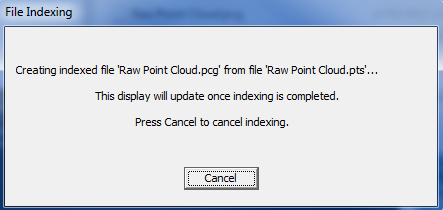 |
| Image from BIMopedia |
Read the whole post at:
Stand alone indexing of RAW point cloud data into .pcg files | BIMopedia
If you want to know more about different point cloud formats / file extensions, there is some info on the wiki:
- Point Cloud Projects (*.rcp): Pick an indexed point cloud project file with .rcp extension. An .rcp is an aggregation of multiple .rcs point cloud files.
- Point Clouds (*.rcs): Pick an indexed point cloud file with .rcs extension.
- Raw formats: Pick a file with an extension in the list to automatically launch an indexer application that will convert the raw file to an indexed file.
Note
After the indexed file is created, you must use the Point Cloud tool again to insert the file. - All Files: Pick a file with any extension.
Have you ever been frustrated by Revit when editing the end point of a spline? You try to drag the end point – and instead the entire line gets dragged or scaled!
The problem? You need to Tab-select the actual endpoint after selecting the Spline itself. But you know what? Revit seems to give you no visual cues that you have selected the End Control Point rather than the ‘end point of the entire spline’.
Here is the three ways to modify the spline using the spline end point:
1) Move entire line
Single-click on the end point and drag in one motion
RESULT – entire line gets moved (Press & Drag must be enabled)
2) Scale entire line between endpoints
Select the spline, then select and drag one of the spline endpoints.
RESULT – entire line gets scaled
3) Move the end control point only
Select the spline, mouse over one of the endpoints, hit Tab, then press and drag the point.
RESULT – only end control point is moved, rest of spline remains
Given the big difference between 2) and 3), you would assume that Revit would tell you which one it is going to do, correct? Wrong. The status bar shows the same thing prior to both commands – “Drag Line End”. The tooltip shows the same thing regardless of whether you have pressed Tab or not – “Drag Line End”.
However, if you have incredibly good vision, there is one difference. Have a look at the image below:
If the inner dot is highlighted, Press and Drag will Scale the spline, if the outer ring of the point is highlighted, Press and Drag will move the Control Point only.
I think the way this works currently is a bit counter-intuitive. Hopefully it will get cleaned up in a future update or new release.
Sometimes you may have trouble using a DWG that contains ‘points’ to create a Revit topography.
There are two main ways around this.
METHOD 1
Here is a LISP routine to export points in a DWG to CSV file:
http://www.revitcity.com/forum_files/69930_RegCoorPointsCsv.lsp
These points can then be imported when making a Revit topography by selecting ‘Specify Points File’ on the Ribbon.
via
RevitCity.com | Topo point does not import?
METHOD 2
Alternatively, you can Replace the points with some other object that Revit will make use of more easily (for instance, a block with some very short lines). To do this, use the ‘RP’ LISP routine from the following post:
Re: Replace point with block/object – Autodesk Discussion Groups

